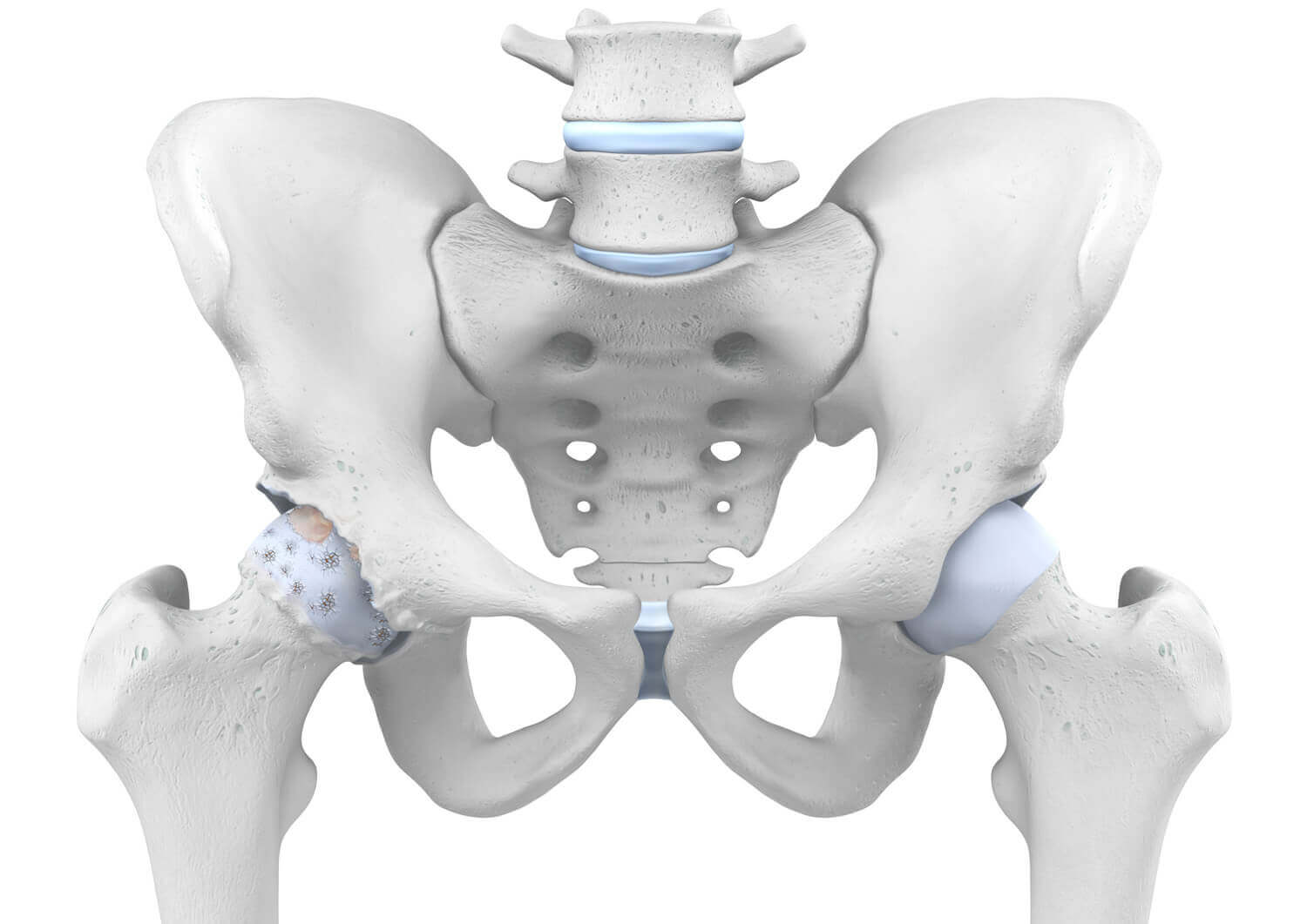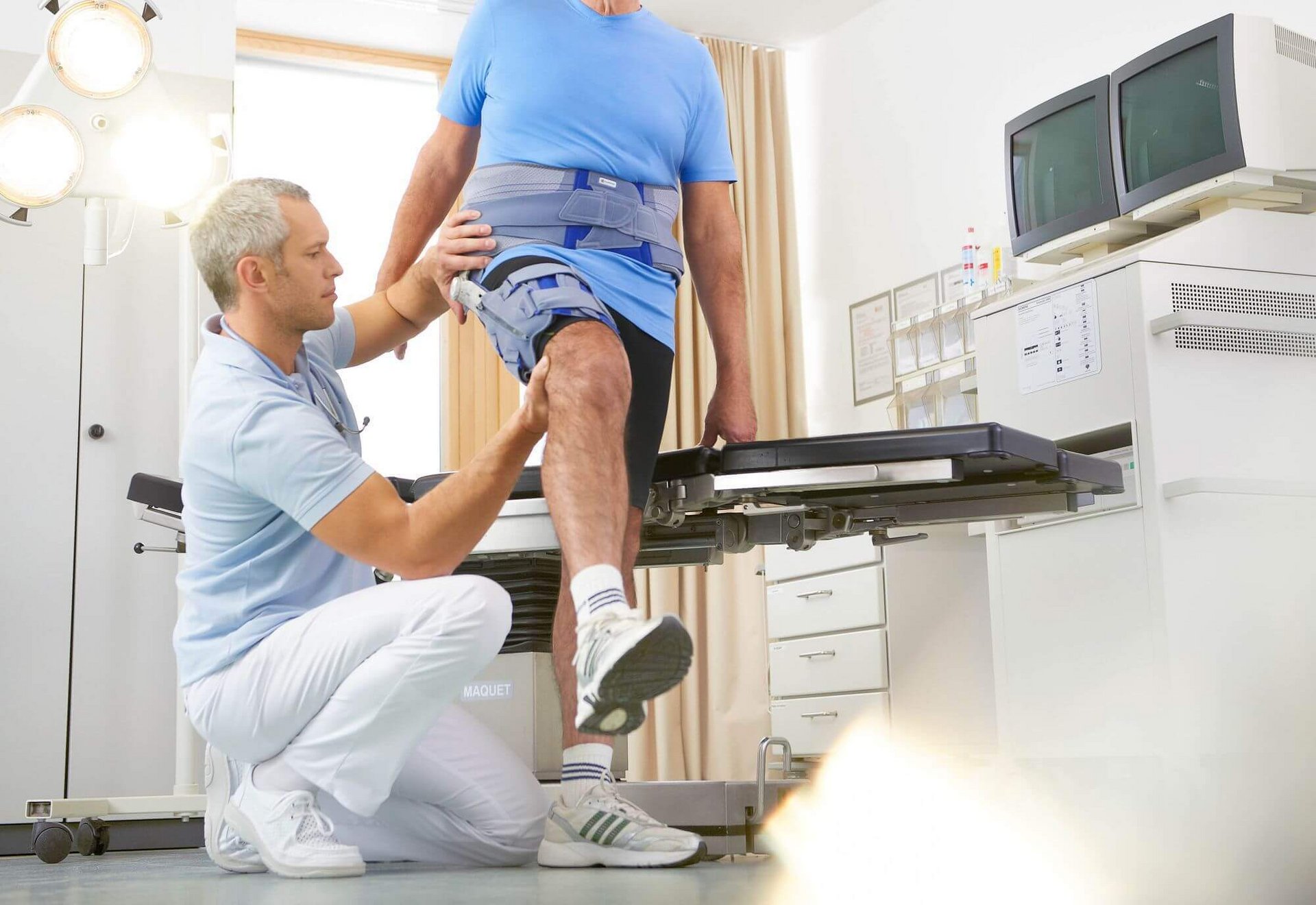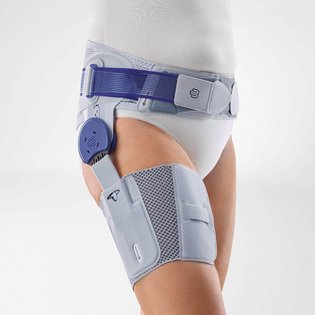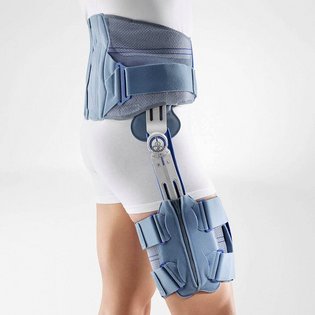Increasing pain in the hip and groin area that occurs when descending the stairs, bending down, or during the first few steps when walking can indicate osteoarthritis of the hip. Osteoarthritis of the hip (or coxarthrosis) is a degenerative condition of the hip joint which can progress so severely that an artificial hip joint must be implanted. Early diagnosis and subsequent treatment are therefore crucial to delay the progression of the condition for as long as possible and to alleviate pain. Find out in this article how osteoarthritis of the hip develops, which symptoms are associated with it, and what you can do about them.
Field reports with CoxaTrain
Tischtennisprofi Jörg Rosskopf
Einzelhändler Ingo Palm
What is osteoarthritis of the hip?
Osteoarthritis of the hip describes a degenerative and irreversible hip condition also known as joint wear. The hip joint is made up of the hip socket and the femoral head. A defective cartilage layer over the joint surfaces indicates a severe progression of the osteoarthritis condition. This is known as “cartilage damage”. The cartilage wears increasingly, gets thinner, and can tear in places. This means there is more pressure on the bone underneath. Those affected by osteoarthritis of the hip often do not have any symptoms for a long time. Only when the condition has progressed, pain occurs that can result in stiffness of the joints.
Osteoarthritis of the hip: causes and potential consequences

Osteoarthritis of the hip is a condition that occurs more frequently with increasing age. But it can also start much earlier in persons suffering from certain pre-existing conditions. If osteoarthritis of the hip occurs at a younger age, it will usually be the result of an accident or a misalignment – also known as hip joint dysplasia which is congenital.
Other triggers for early onset osteoarthritis of the hip include:
- Constant excessive strain, e.g. work-related (gardeners, tilers, etc.)
- Obesity
- Inflammatory joint disorders
- Metabolic disorders
Osteoarthritis of the hip: which symptoms are indicators of this condition?
Symptoms of osteoarthritis of the hip develop gradually. When subjected to strain, patients will increasingly suffer from pain, especially in the groin area. Initially, the signs occur only in cases of great strain. Later on, those affected will no longer be able to walk normal distances without pain. Bending down as well as descending the stairs will cause difficulties. Eventually, problems will even occur when sitting or lying down. Simple tasks such as tying or undoing shoe laces will become painful or impossible.
Those affected often ignore initial symptoms of osteoarthritis of the hip, meaning a diagnosis is not made until damage has already been caused to the hip joint. Only a physician will be able to tell whether your hip pain is a result of osteoarthritis. A detailed patient survey (medical history) and X-rays will back up the diagnosis.
The medical sector refers to “activated osteoarthritis of the hip” when there is also inflammation. The joint can barely be subjected to strain and hurts a lot.
Treatment of osteoarthritis of the hip in cases of misalignments

In cases of hip dysplasia (misalignments) in adults, which can be the result of an accident or a disorder, monitoring the progression is important to prevent the hip joint from excessive strain. This also includes regular weight checks and an exercise program adapted to the symptoms. Swimming and cycling are particularly suitable. Strengthening the muscles involved is essential to stabilize the hip joint. Purely resting, however, does not help the healing process.
Without treatment, the misalignment will lead to an asymmetrical strain on the joint cartilage. This, in turn, can result in inflammation, which is very painful. If the cartilage has worn away, the bones will get damaged. At this stage of the condition and if pain is present, an artificial hip is usually implanted. The following therefore applies: the earlier treatment is started, the longer implanting of a hip TEP (total endoprosthesis), i.e. an artificial joint, can be delayed.
Non-surgical treatment measures for osteoarthritis of the hip

In order to alleviate pain and delay the progression of osteoarthritis of the hip, different non-surgical treatment options are used: in addition to taking pain medication, a regular, targeted exercise program is recommended. Physiotherapy, strengthening and stretching exercises, as well as gentle activities, are ideal. Weight loss in cases of obesity also helps to provide the hip joint with permanent relief: combined with a change in diet adapted to osteoarthritis, this can be achieved by physical activity – if required. Furthermore, low-impact everyday routines should be ensured, meaning, for example, heavy lifting and similar strain should be avoided.
Orthopedic aids, such as the CoxaTrain hip orthosis, provide support both during everyday activities and as part of kinesiotherapy. The hip orthosis guides and stabilizes the joint during walking, thus ensuring improved gait. Furthermore, the CoxaTrain reduces muscular imbalances and alleviates hip pain, thanks to its massage effect on the muscles that are involved in movement. Wearing the orthosis helps to alleviate symptoms during different stages of osteoarthritis of the hip.
Hip TEP – surgery to treat osteoarthritis of the hip

When osteoarthritis of the hip has progressed, non-surgical measures are often no longer enough, meaning surgery is required. At this stage, the patient will be extremely restricted during everyday activities and the joint is at risk of stiffening. Pain is the main reason any additional movement is harder.
This surgery is carried out frequently in Germany. Artificial hip joints are available in different materials and can last 15 to 20 years. When a hip TEP is implanted, it is usually the femoral head and the joint socket that are replaced. A partial replacement of the joint is also possible, with the extent of the damage being the deciding factor.
.
Hip orthoses before and after hip TEP surgery
Even weeks before surgery, those affected should start preparing for their procedure. As a supporting measure, patients can develop the muscles in the affected area to stimulate circulation, for example. This can accelerate the healing process after surgery, and reduces the risk of complications after the hip TEP has been implanted. Alongside, wearing an orthosis that will provide additional stabilization during training is recommended. The multifunctional orthoses SofTec Coxa and CoxaTrain have proven to be highly effective.
The SoftTec Coxa features an external hinge which determines the possible extent of mobility. The pivot point of this hinge can be individually adjusted to your state of health by an orthotist.
This will minimize the risk of consequential damage caused by careless movements. It also reduces the risk of injury in patients whose stabilizing muscles have to be developed with targeted exercise programs after surgery.
This orthosis is used both before and after hip joint surgery. Before surgery, wearing the orthosis alleviates pain and stabilizes the hip joint, ensuring fewer problems in everyday life. After surgery, the orthosis helps heal the joint socket and the muscles by controlling the range of motion. The guided movement provides patients with more confidence during everyday activities and prevents certain movements in the end range of motion, such as crossing their legs during sitting, so recovery can be smooth.



